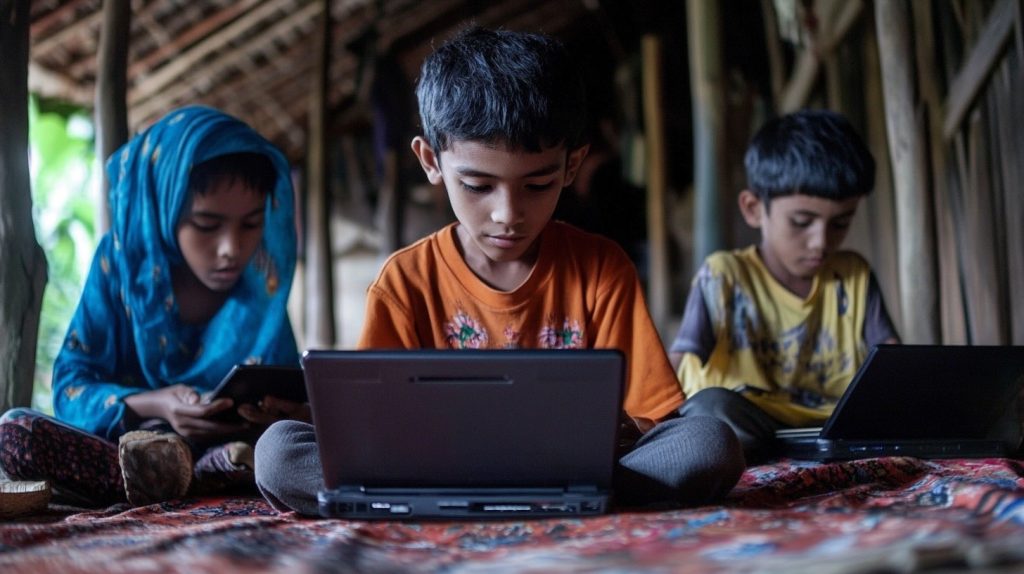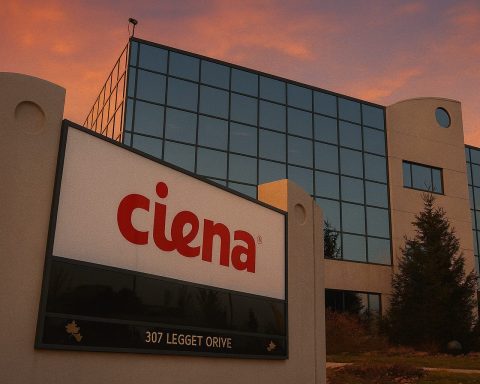- Nepal’s mobile market is led by Nepal Telecom with about 57% share, Ncell around 36%, and Smart Telecom about 6%.
- WorldLink Communications is the largest fixed broadband ISP with 972,781 subscribers as of 2024, roughly 30% of Nepal’s fixed broadband connections.
- FTTH subscribers surpassed 2.5 million in January 2023 and reached about 2.89 million by late 2024, with home plans typically 20 Mbps to 100–300 Mbps and premium options up to 600 Mbps or 1 Gbps.
- 4G coverage reached about 88% of the population by 2023, with Nepal Telecom reporting 11.5 million 4G users and total mobile broadband subscriptions around 26 million.
- The first 5G trials in Nepal were conducted by Nepal Telecom in 2023 on the 2600 MHz band, including non-public Kathmandu tests in February 2023 and public trial coverage of around 5% of the population by mid-2023.
- Over 90% of Nepal’s international internet traffic travels through India, with Airtel providing about 70% and Tata Communications about 20%, and a May 2023 outage due to unpaid dues lasting about 5 hours.
- The Rural Telecommunications Development Fund connected 16,208 locations by 2023, including 5,933 ward offices, 5,318 schools, 4,249 health institutions, and local government offices.
- Starlink negotiations in 2023 were slowed by Nepal’s 20% local ownership rule for foreign operators, and Starlink could offer 50–150 Mbps speeds at about $100+ per month with a $599 dish if allowed.
- Nepal’s national fiber backbone was about 4,932 km long in 2023, with nearly half the population living more than 10 km from a fiber node, pushing rural connectivity toward wireless or satellite.
- The government aims to connect all 753 local government units with high‑speed fiber, expand international gateways to India and China for redundancy, and accelerate 5G rollout after improving 4G coverage.
Nepal’s unique geography – from the towering Himalayas to remote hill villages – makes internet access both challenging and crucial. In recent years, Nepal has made significant strides to expand digital connectivity across the country. This report examines Nepal’s internet landscape in detail: the major service providers and their market share, the state of mobile and broadband networks, typical speeds and costs, infrastructure hurdles, satellite internet plans, government policies, the urban-rural digital divide, and future connectivity initiatives. Despite formidable terrain and infrastructural challenges, Nepal is racing to bring high-speed internet from the capital Kathmandu all the way to Everest’s doorstep.
Major Internet Service Providers (ISPs) and Market Share
Nepal’s internet market is served by a mix of state-owned telecom companies and private ISPs, divided broadly into mobile operators and fixed broadband providers:
- Mobile Operators: Two companies dominate mobile internet. Nepal Telecom (Nepal Doorsanchar Company Ltd, a government-majority telco) is the largest, with over half of all mobile subscribers. It holds about 57% of the mobile market [1]. Ncell (a private operator, part of Axiata Group) follows with roughly 36% share [2]. A distant third is Smart Telecom (STPL) with around 6% of subscribers [3]. These operators collectively account for almost all mobile internet access in Nepal. (A few minor operators like Nepal Satellite Telecom exist but with negligible share.)
- Fixed Broadband ISPs: Nepal’s fixed broadband sector has dozens of ISPs, but a handful lead the market. WorldLink Communications is the nation’s largest ISP, with nearly 1 million fixed broadband subscribers(972,781 users) as of 2024 [4]. This makes WorldLink not only the top ISP but the third-largest telecom provider overall. Other major ISPs include DishHome Fibernet (~343,825 subscribers) [5], Nepal Telecom’s own Fiber-to-the-Home (FTTH) service (~321,758 subscribers) [6], Subisu Cablenet (~310,627 subscribers) [7], and Vianet Communications (~242,333 subscribers) [8]. Each of these has a market share in the range of 10–15% of the fixed broadband segment. Another notable ISP is Classic Tech, which along with slightly smaller players like WebSurfer, also serves a few hundred-thousand users. WorldLink alone accounts for roughly 30% of Nepal’s fixed broadband connections, a testament to its reach [9].
Urban vs. Rural Presence: The big private ISPs (WorldLink, Subisu, Vianet, Classic, DishHome) primarily operate in cities and towns, especially in the Kathmandu Valley and other urban centers. Nepal Telecom, by virtue of being a legacy operator, has broader coverage including semi-urban and some rural areas via older ADSL lines and newer fiber. In terms of overall internet penetration, Nepal has more subscriptions than people – the latest reports show over 40 million internet subscriptions in a nation of ~30 million, translating to 131–149% population penetration (many individuals have multiple subscriptions) [10] [11]. However, this headline number hides disparities in usage and access, which we will explore.
Mobile Network Availability and Penetration (2G, 3G, 4G, 5G)
Mobile networks are Nepal’s primary mode of internet access, especially in rural and mountainous regions where laying cables is difficult. Nepal has achieved near-universal mobile network coverage for basic voice and SMS, and is steadily improving mobile broadband coverage:
- 2G: Legacy GSM networks (900/1800 MHz) cover most populated areas of Nepal, providing basic telephony and EDGE/GPRS data. While 2G data (GPRS/EDGE) is not considered “broadband” by regulators, it remains a fallback in remote areas. Virtually all Nepal’s population is under some 2G signal footprint via Nepal Telecom or Ncell towers.
- 3G: Nepal introduced 3G (WCDMA) in the mid-2000s, and by 2023 3G networks covered about 90% of the population [12]. Both Nepal Telecom and Ncell operate 3G on 2100 MHz, and Smart Telecom offers limited 3G in its licensed areas. As of early 2023, Nepal Telecom alone had over 7.13 million 3G users [13](often those in areas without 4G or using older devices). Combined 3G subscriptions across all providers were around 8 million [14]. However, 3G usage is declining as 4G expands.
- 4G: Fourth-generation LTE has rapidly become the main platform for mobile broadband. Since its introduction in 2017, 4G coverage has reached ~88% of the population [15]. Nepal Telecom and Ncell both operate 4G networks (on bands like 1800 MHz, 800 MHz etc.), with coverage concentrated in cities, highways, and towns – but increasingly extending to rural areas and even tourist trails. By 2023, Nepal Telecom reported 11.5 million 4G users [16], and nationwide there are about 26 million mobile broadband subscriptions (mostly 4G) [17]. This corresponds to roughly 89% mobile broadband penetration [18]. Notably, popular trekking regions now enjoy 4G signals in many spots: for example, 4G is available at Everest Base Camp’s vicinity and parts of the Annapurna Circuit, giving trekkers connectivity in the high Himalayas. Still, signal in such extreme terrain can be spotty and is not everywhere – locals often rely on specific carriers (Nepal Telecom in some villages, Ncell in others) for the best coverage [19].
- Early 5G Initiatives: Nepal is cautiously exploring 5G. The first 5G trials were started by Nepal Telecom in 2023, using test spectrum in the 2600 MHz band [20]. In February 2023, Nepal Telecom rolled out non-public trial networks in parts of Kathmandu (Sundhara and Babarmahal areas) [21]. These tests (timed with the company’s anniversary) were internal, and full public 5G launch was still pending regulatory approval and device readiness. By mid-2023, 5G was not yet commercially available – covering at most an estimated 5% of population in trial zones [22]. The regulator, NTA, has been working on allocating 5G spectrum to operators [23]. Both major carriers aim to introduce 5G services soon, focusing on cities first. However, given the relatively low penetration of 5G-capable phones and the priority to expand 4G to the remaining rural areas, 5G in Nepal is likely to roll out slowly over the next few years. In the meantime, 4G is expected to remain the workhorse for mobile internet access.
In summary, mobile penetration in Nepal is very high – there are more active mobile connections than people (about 139% of population in early 2023) [24], since many users have dual SIMs or separate work/personal phones. Virtually every Nepali who uses the internet has accessed it via mobile at some point. The challenge now is upgrading network quality: ensuring that those covered by a 4G/3G signal actually have a device and plan to use it. (While 88–90% are covered by 3G/4G, actual usage lagged behind – only ~69% use 4G and 25% use 3G, indicating a usage gap in rural areas where coverage exists but adoption is lower [25] [26].)
Fixed Broadband Availability: ADSL, Fiber, Cable and the Urban-Rural Gap
Fixed broadband in Nepal has seen rapid growth via fiber-optic networks, though coverage remains uneven. Historically, Nepalis accessed the internet at home through dial-up or ADSL over telephone lines, but over the past decade a transition to high-speed fiber and cable broadband has occurred, especially in cities.
- ADSL and Legacy Copper: Nepal Telecom introduced ADSL (asymmetric DSL) in the mid-2000s over landline phone lines. For many years, ADSL was the main fixed internet option, with speeds up to 1–5 Mbps. However, ADSL coverage was largely limited to towns and had a reputation for slow speeds and instability. As of 2023, Nepal Telecom still had about 303,000 ADSL subscribers [27], but this number is dwindling as users migrate to fiber. ADSL is now considered outdated; the telco is no longer expanding it, focusing instead on fiber upgrades. In rural areas, some small exchanges still offer ADSL where fiber isn’t present yet.
- Fiber to the Home (FTTH): Fiber broadband has boomed in Nepal’s urban and semi-urban areas. All major ISPs now offer FTTH connections, delivering high speeds (typically 20 Mbps up to 100–300 Mbps for home plans, and even 600 Mbps or 1 Gbps in premium plans [28]). The total number of fiber broadband users exceeded 2.5 million by Jan 2023 [29] [30]and climbed to about 2.89 million by late 2024 [31]. This represents roughly 33–44% of the population having a fixed broadband subscription [32] [33]. The majority of these are fiber connections, since cable modem users are relatively few. ISPs like WorldLink, Subisu, Vianet, Classic, DishHome, and Nepal Telecom have collectively wired up most neighborhoods in Kathmandu and major cities. Fiber connectivity is now expanding to smaller towns as well – for instance, WorldLink claims presence in 73 out of 77 districts, including remote areas of Karnali province [34]. Still, there is a stark urban-rural divide: in cities, one might have a choice of 3–5 fiber ISPs, whereas in many rural villages, fixed broadband is simply unavailable.
- Cable Broadband and Wireless ISPs: Before fiber took off, cable internet (using coaxial cable TV networks) was offered by a few ISPs like Subisu and smaller cable operators. Subisu’s “Cable Modem” service was significant in the 2000s, but it has largely transitioned to fiber now. As of 2023, only about 71,000 subscriptions nationwide were cable (coax) internet [35] [36], indicating that coax has been almost entirely supplanted by fiber. Meanwhile, there are also some fixed wirelessbroadband providers – these use radio links or Wi-Fi transmitters to serve areas without cable/fiber. Roughly 14,000 wireless broadband subscriptions were counted in 2023 (excluding mobile) [37] [38]. Notable examples include ISPs in rural towns using point-to-point radio links, and community networks. One pioneering project is the Nepal Wireless Networking Project, which set up wireless internet in remote mountain villages via long-range Wi-Fi and has enabled connectivity in places like the Annapurna region.
- Urban vs Rural Infrastructure: In urban Nepal (e.g. Kathmandu Valley, Pokhara, Biratnagar, etc.), residents enjoy relatively modern broadband infrastructure – fiber-optic cables run along poles or underground, delivering reliable high-speed internet. Many ISPs also bundle services like IPTV (digital TV) with these connections. By contrast, in rural areas and isolated villages, laying fiber is difficult and often not commercially viable. The terrain – steep hills, rivers, and remote settlements – makes last-mile connectivity costly. As a result, rural broadband mostly relies on mobile networks (3G/4G) or small wireless providers. Some villages have set up community Wi-Fi using a central VSAT or microwave link. The government, through the regulator’s rural telecom fund, has also subsidized extending fiber backbones and internet points to local government offices, schools, and health posts in remote areas (more on this in Digital Divide section). Overall, fixed broadband is heavily concentrated in urban and peri-urban locations, whereas much of rural Nepal remains dependent on cellular data or has no internet at all aside from perhaps a community telecenter.
Despite these gaps, the trend is positive – Nepal’s fixed broadband penetration jumped from virtually zero in the early 2010s to around 42% in 2024 [39], driven by aggressive fiber rollout. The COVID-19 pandemic accelerated demand for home internet, prompting tens of thousands of new subscriptions (Nepal Telecom alone added 60k new FTTH users during the first 10 months of lockdowns) [40]. ISPs are continuing to expand fiber networks outward from district centers, though reaching the most remote populations will still require wireless or satellite solutions.
Internet Speeds and Pricing in Nepal
How fast is Nepal’s internet? The speeds experienced by Nepali users have improved significantly, but still lag behind global averages on mobile. According to Ookla’s Speedtest data, as of early 2023 the median mobile download speed in Nepal was about 13.5 Mbps [41]. For fixed broadband (mostly fiber), the median speed was around 48.5 Mbps [42]. These figures reflect major gains – fixed broadband speeds jumped +71% year-on-year [43]as fiber replaced ADSL, while mobile speeds actually saw a drop of about 26% from the previous year [44](possibly due to network congestion and many new 4G users coming online). Even so, by late 2024 the average speeds are likely higher, especially with ISPs now offering base plans of 50–150 Mbps.
Speed offerings: Nepali ISPs commonly provide tiers like 20 Mbps, 40 Mbps, 60 Mbps, 100 Mbps, and higher for home use. In fact, WorldLink announced in 2021 that it was upgrading all customers to a minimum 150 Mbps package [45], and even launched a 600 Mbps plan, the fastest in the country [46]. Those top speeds are available in cities for a premium price. Mobile 4G speeds in practice vary widely – in strong coverage areas, users might get 10–30 Mbps, while in rural or congested cells, speeds can fall below 5 Mbps. Latency on 4G is decent (~30-50 ms), whereas on 3G it’s higher. In fixed broadband, fiber connections have low latency (<5-10 ms domestically).
Price levels: Internet service pricing in Nepal is considered moderate by global standards but can be high relative to local incomes. The average Nepali spent about 2.6% of their annual income on internet access in 2020, one of the higher shares in South Asia [47]. Affordability has improved with competition – for example, WorldLink’s 150 Mbps unlimited plan costs NPR 14,400 per year (about NPR 1,200 per month, roughly USD $10) [48], which is far cheaper per Mbps than older plans. A basic 20 Mbps or 30 Mbps fiber connection might cost around NPR 800–1,000 per month on an annual subscription (roughly $6–8). Many ISPs give discounts for longer commitments and bundle TV service.
Mobile data is typically sold via packages: e.g. NPR 100 for 1 GB data pack, or monthly packs like NPR 799 for 40 GB, etc., depending on the operator. In general, mobile data prices in Nepal are lower than a few years ago, but not the cheapest in the region. For heavy usage, broadband is more economical. It’s worth noting the government still imposes telecom service charges and recently even raised taxes (excise duty) on internet services [49], which ISPs warn could force them to raise prices. Despite that, the trend has been toward more data for the same priceover time.
Speed comparisons: Compared to neighbors, Nepal’s average speeds are lower than India’s but on par with or higher than other South Asian countries like Pakistan or Bangladesh in some reports [50] [51]. The average fixed broadband speed ~48 Mbps [52]is now above the global average of ~40 Mbps reported a couple of years ago [53]. However, the average mobile speed ~13 Mbps is still well below the global average (which is above 30 Mbps). As 4G networks expand and 5G eventually arrives, mobile speeds should climb.
For an average Nepali consumer, the internet experience has improved – streaming YouTube or Facebook on 4G is generally smooth, and fiber broadband users can easily watch HD or 4K videos and participate in video calls (a far cry from the dial-up days). The main issue remains consistency: rural users often complain of slow mobile internet, and even urban ISPs face complaints about downtime and evening slowdowns due to high contention ratios. The regulator NTA has even moved to require compensation for prolonged service outages [54]to push providers to maintain quality.
In summary, internet in Nepal is getting faster and relatively cheaper, but the cost can still be a burden for low-income households, and the fastest speeds are mostly enjoyed by urban users.
Infrastructure Development and Challenges in a Mountainous Terrain
Building internet infrastructure in Nepal is an uphill task – literally. The country’s terrain includes the world’s highest mountains, steep hills, deep valleys, and areas of lowland jungles. This geography, combined with Nepal’s status as a landlocked nation, poses unique challenges for connectivity.
National fiber backbone: Nepal relies on fiber-optic cables as the backbone of its internet infrastructure, linking cities and carrying traffic to international gateways. Laying fiber across Nepal’s mountains is costly and slow. As of 2023, Nepal’s fiber backbone length was only about 4,932 km [55]. Many rural municipalities remain far from these high-capacity links – it’s estimated nearly half the population lives more than 10 km away from a fiber node [56], indicating that backhaul to those areas is often via microwave radio or not at all. The government and NTA have been investing in projects to extend fiber along major highways and to all 77 district headquarters. There is a concept of a “Mid-Hill Information Highway” – a fiber route stretching east-west through the hilly regions – which is under development to complement the existing fiber routes in the southern plains. Nonetheless, reaching remote mountain areas (e.g. high Himalaya districts like Mustang, Dolpa, Humla) with fiber is extraordinarily difficult. These places often depend on satellite or long-distance wireless for connectivity.
International bandwidth – dependence on India: Being landlocked, Nepal has no direct submarine cable access. Instead, it must buy internet bandwidth from providers in India (and also via China). Currently, over 90% of Nepal’s international internet traffic goes through India [57]. Indian telecom giants Bharti Airtel and Tata Communications together supply the vast majority – Airtel alone provides about 70% of Nepal’s bandwidth, and Tata about 20% [58]. Nepal is connected to India’s fiber networks at multiple border points (Birgunj-Raxaul, Bhairahawa-Sunauli, Biratnagar-Jogbani, etc.). In 2016, a historic fiber link to China (via Rasuwagadhi-Kerung border into Tibet) was activated to diversify Nepal’s access. However, usage of the China route is still limited (around 10% or less of total bandwidth) – possibly due to higher costs and routing preference. This heavy reliance on India means Nepal’s internet is vulnerable to disruptions and geopolitical issues. For instance, in May 2023 a dispute over unpaid dues led Airtel to briefly cut off service, causing a nationwide internet outage for about 5 hours [59] [60]. The incident raised alarms about having single points of failure and the importance of redundancy and financial arrangements for international links.
Power supply and infrastructure quality: Another challenge is power and maintenance. Nepal’s electrical grid historically was unreliable (though power cuts have improved greatly in recent years). Remote telecom towers often run on solar panels and batteries due to lack of grid power. Extreme weather – monsoon storms, lightning, landslides, heavy snow – frequently damages infrastructure. Each year, monsoon floods and landslides wash away fiber-optic cables or knock out towers in certain regions, leading to outages. Earthquakes are also a threat: the 2015 Gorkha earthquake damaged networks in central Nepal, highlighting the need for resilient infrastructure.
Terrain and last-mile connectivity: The phrase “last-mile” takes on a new meaning in Nepal’s mountains, where the last mile might be straight up a cliff or over a glacier. Extending connectivity from a district center to outlying villages can require innovative solutions. In hill regions, ISPs or communities have built line-of-sight wireless relays: for example, putting a Wi-Fi tower on a ridge to connect villages in the next valley. The Nepal Wireless Project famously used a network of mountain-top relay stations (some powered by solar) to beam internet into remote villages, enabling services like telemedicine and distance learning. Even the Everest region benefits from such ingenuity – an ISP named Everest Link deploys wireless base stations along trekking routes to provide Wi-Fi hotspots to lodges. These examples show that wireless microwave and radio links are often the pragmatic choice to leapfrog Nepal’s difficult topography.
In terms of basic telecom, Nepal Telecom has installed cellular towers in some extreme locations (including a 4G tower near the Everest Base Camp route [61]). But many rural municipalities (gaupalikas) still lack fiber connectivity to the rest of the network; they rely on point-to-point wireless backhaul which can have limited capacity.
Infrastructure investment: The Nepali government and private sector are both investing to improve this situation. The Rural Telecommunications Development Fund (RTDF), fed by a levy on operators, has financed connecting thousands of public facilities. By 2023, NTA reported broadband internet access had been extended to 16,208 locations using RTDF projects [62]– including 5,933 ward offices, 5,318 schools, 4,249 health institutions, and local government offices [63]. This often involved laying fiber or setting up wireless links to those sites, effectively bringing a high-speed node into each community that can then be shared or expanded. Such backbone expansion and last-mile pilots are slowly chipping away at the connectivity gap.
Despite the progress, the challenge of Nepal’s geography is far from fully solved. The extreme remoteness of some settlements means that reaching the “last person” with fiber or terrestrial wireless will be prohibitively expensive. This is where satellite solutions (discussed next) might become crucial. Moreover, Nepal’s heavy dependence on foreign bandwidth makes domestic internet costs high and can hamper quality – for example, latency to foreign servers is high, and any political or economic issues with India could impact connectivity. To mitigate this, Nepal is encouraging local content caching and has established an Internet Exchange (npIX) to keep local traffic within Nepal. Still, building a robust, nationwide high-speed network across the Himalayas is an expensive marathon, not a sprint.
Satellite Internet: Reaching Remote Areas (Starlink and VSAT)
Given the difficulties of terrestrial networks in Nepal’s terrain, satellite internet has always been an option for remote connectivity – though traditionally a costly one. Nepal has a history of using VSAT (Very Small Aperture Terminal)satellite links to connect remote areas: schools, health posts, police stations, and even rural telecenters were often equipped with VSAT dishes, especially in the early 2000s before fiber or mobile coverage reached those areas. Nepal Telecom and some private companies have long provided VSAT-based services (using satellites like Intelsat, Thaicom, etc.), primarily for voice and low-speed data in mountain regions. However, VSAT bandwidth is limited and expensive, so it was never used widely by the general public – more as an option of last resort for essential communications.
The satellite internet landscape is now changing globally with the advent of Low Earth Orbit (LEO) constellations like SpaceX’s Starlink. These can provide high-speed, low-latency internet anywhere with a view of the sky. In 2023, Starlink set its sights on Nepal, recognizing a strong market need. Representatives of SpaceX engaged in talks with Nepali officials and even met the Prime Minister to discuss launching Starlink service [64] [65]. The government has shown interest, seeing satellite broadband as a solution for Nepal’s “difficult geographical terrains”that are ill-suited to conventional networks [66]. Starlink promised to deliver “cheap, reliable, high-tech” internet via satellite [67], which sounds ideal for Nepal’s northern Himalaya and isolated communities.
However, regulatory hurdles have slowed Starlink’s entry. Nepal’s law requires any foreign company to have at least 20% local ownership to operate services in the country [68]. Starlink reportedly wanted to set up a 100% foreign-owned subsidiary (as it has done elsewhere) and was hesitant to partner locally [69]. As of mid-2023, the Nepal Telecommunications Authority (NTA) had not received a formal Starlink license application [70]. Negotiations were ongoing – officials indicated willingness to welcome Starlink if legal issues could be resolved [71]. The Nepal Army and neighbors India and China have also raised strategic concerns, since foreign-controlled satellite networks in a sensitive region can pose security questions [72]. Despite these complexities, by 2024 the expectation is that Starlink (or similar LEO providers) will eventually launch in Nepal, possibly via a local partner or after regulatory adjustments. If and when it becomes available, Starlink could be transformative for places like high mountain villages, where currently even a basic internet connection is a luxury.
In the meantime, traditional satellite services continue. The government itself relies on some satellite connectivity for governance – e.g., many rural municipalities have a government-provided VSAT link ensuring they have email/VOIP even if mobile networks fail. There are also satellite payphone services in extremely remote hamlets. Some private firms offer VSAT to businesses (e.g. banks use VSATs for ATM connectivity in remote branches).
For the average consumer, satellite internet hasn’t been an option so far – due to high cost and limited throughput. Starlink could change that by offering ~50–150 Mbps downlink speeds directly via a small dish. That said, cost will be a factor: Starlink service might cost on the order of $100+ per month (and a $599 dish) [73], which is beyond the reach of most Nepalis. It might initially target businesses, aid organizations, or well-funded users in remote areas (mountaineering expeditions, hotels in the Everest region, etc.). Over time, if prices drop, it could become a lifeline for remote citizens.
In summary, satellite internet is poised to play a growing role in Nepal’s connectivity – plugging the hardest gaps where mountains defeat fiber and cell towers. The government appears optimistic about leveraging Starlink once legal kinks are worked out, as it could significantly boost rural internet access and even act as backup for critical services [74]. Until then, Nepal will continue to use the mix of VSAT and “hybrid” solutions (e.g. a combination of microwave relays and satellites) to reach its most isolated corners [75].
Government Regulation and Policies: Balancing Growth, Censorship, and Connectivity
The Nepali government, through the Ministry of Communication and Information Technology and the Nepal Telecommunications Authority (NTA), plays an important role in the internet sector – both as a promoter of connectivity and a regulator of content and competition. Key aspects of regulation and policy include:
- Telecom and Internet Policies: Nepal’s telecom policy has encouraged competition in basic internet services – hence the presence of dozens of private ISPs. Licensing by NTA has been fairly liberal, resulting in 60+ licensed ISPs by 2024 [76]. To expand access, the government in 2015 adopted a Broadband Policy defining broadband as ≥512 Kbps and setting targets for nationwide coverage. The Rural Telecommunications Development Fund (RTDF) (now renamed Telecommunications Development Fund) collects 2% of telecom revenues to finance rural connectivity projects [77]. As noted, this fund is currently being used to connect schools, local offices, etc. The government also waived license fees for smaller rural ISPs and has subsidized internet for community use in some cases.
- “Digital Nepal” initiatives: The government launched the Digital Nepal Framework in 2019, a broad strategy to leverage ICT in various sectors (education, health, agriculture, energy, etc.) and improve digital infrastructure. This includes plans for e-governance and improving internet access. One concrete step: the government has made many public services accessible online, driving demand for internet. Public-private partnerships, like with WorldLink and Facebook to create thousands of Wi-Fi hotspots nationwide [78], have been encouraged to increase availability.
- Internet Content Regulation and Censorship: While Nepal’s internet is generally free, the government has imposed certain content restrictions. For example, pornography websites are officially banned by an NTA directive, with ISPs required to block them. There have been instances of censorship or shutdowns: during past political turmoils (such as the 2015 constitution protests), authorities temporarily blocked social media or messaging apps. In 2019, Nepal briefly banned the popular video game PUBG citing its impact on children (though the ban was later lifted by court order). These acts show a willingness to control online content in the name of social concerns. More worryingly, in 2023 the government approved a new National Cybersecurity Policy that raises the prospect of much tighter control. This policy includes a provision for a government-owned National Internet Gateway [79]. Such a gateway, if implemented, would funnel all international internet traffic through a state-controlled choke point. Observers noted this could “centralize control of all internet traffic… potentially supercharging surveillance and censorship” [80], similar to models used in China or Cambodia. Digital rights groups in Nepal have criticized this policy for being vague and lacking human rights safeguards [81]. As of late 2023, the gateway has not been set up, but the policy direction indicates the government’s desire for greater monitoring capabilities.
- Surveillance and Privacy: Nepal’s security agencies do conduct surveillance of communications with legal oversight. ISPs are required to cooperate with law enforcement on court-approved intercepts. There have been reported cases of individuals being arrested under the Electronic Transactions Act for online speech (like social media posts deemed defamatory or “improper”). The Cybercrime law is sometimes used to curb online criticism of officials. These practices have led to Nepal being rated only “partly free” in terms of internet freedom in some international indices. The new cybersecurity policy could expand surveillance via the national gateway, which is a point of concern for privacy advocates.
- Market Regulation and Competition: The NTA regulates pricing to some extent and quality of service. In 2022–2023, a big issue was ISPs owing government fees and taxes – at one point, as mentioned, some ISPs hadn’t paid their dues which nearly led to internet blackouts when upstream providers cut them off [82] [83]. The government took legal action to ensure ISPs pay spectrum fees, royalties, and RTDF contributions, which has put financial strain on smaller providers [84]. To protect consumers, NTA is introducing rules so users can get compensation for prolonged outages or sub-par service [85]. The regulator is also pushing telecom operators to improve rural coverage under their license obligations.
- Support for connectivity: On the positive side, the government has generally been supportive of expanding internet access. There are no import duties on many telecom equipment (though a recent increase in fiber cable import tax was criticized [86]). Efforts are underway to build internet exchange points beyond Kathmandu to localize traffic. The government also negotiated bandwidth deals with India and China to get better prices. Another policy focus is disaster resilience – ensuring critical communication networks (including internet) are robust in the face of earthquakes or other disasters, given Nepal’s vulnerability.
In summary, Nepal’s internet governance is at a crossroads: The state actively promotes wider connectivity (seeing internet as key to development and even “digital diplomacy”), but at the same time it is moving toward tighter control over that connectivity. Ensuring affordable, accessible internet for all is a stated goal, yet policies like a centralized gateway and increased excise taxes on services could have unintended consequences. The coming years will show how Nepal balances these aspects – whether it can modernize its regulatory framework to both expand access and protect digital rights.
The Digital Divide: Urban vs. Rural, Affordability and Digital Literacy
Nepal faces a persistent digital divide separating urban, well-connected populations from rural, underserved communities. On paper, Nepal’s internet penetration is very high (over 130% subscriptions per population) [87], but this statistic hides inequalities in access, affordability, and skills:
- Urban vs. Rural Access: In cities like Kathmandu, nearly everyone has internet access – whether through a home broadband line, a smartphone with 4G, or public Wi-Fi. Urban literacy rates are high, and internet usage is a routine part of daily life for many city dwellers. In stark contrast, some remote rural villages still lack any reliable internet. While the mobile network covers most villages, the quality may be limited to 2G or weak 3G signals. Fixed broadband is virtually nonexistent outside towns. The earlier cited figure that only 33% of people use fixed broadband [88]implies that two-thirds of Nepalis (mostly in rural areas) do not enjoy the high speeds and unlimited data that fiber users do. Instead, rural users rely on pricey mobile data – or they remain offline entirely. For example, farmers in mountainous regions might only get connectivity when they go to the district center, or they depend on community centers for occasional use. This gap reflects broader infrastructure disparities – rural areas also have worse roads, electricity, etc., which correlate with poorer internet.
- Affordability: Cost is a major barrier in bridging this divide. The average income in rural Nepal is quite low; if a villager earns, say, NPR 15,000 ($115) per month, spending NPR 1,000 on internet (the cost of a basic plan) is a big ask. Many rural families simply cannot afford a home internet connection or large mobile data packs. While urban middle-class families eagerly subscribe to 100 Mbps plans, villagers often use mobile phones with minimal data balance (just for essential messaging). The statistic that 2.6% of annual income goes to internet on average [89]masks that for a poor rural household it could be an even higher share (or they forego it entirely). The government has not (yet) implemented widespread subsidies or free internet programs for disadvantaged groups, though the RTDF-backed connectivity to schools and health centers is indirectly helping by providing free Wi-Fi at those public sites.
- Digital Literacy: Even where internet infrastructure exists, digital literacy and awareness can be lacking outside the cities. Nepal has an overall literacy rate around ~67%, and digital literacy is lower. Many older people or uneducated populations don’t know how to use the internet or see its relevance. To address this, various NGOs and government programs are promoting digital literacy. For instance, community e-centers were set up in some villages offering training on basic computer and internet use. Schools in Nepal are increasingly incorporating computer education; some secondary schools (especially those now connected to broadband through the RTDF project) have computer labs where students learn to go online. Organizations like Internet Society Nepal and Digital Rights Nepal also run workshops on internet use, online safety, and digital rights for the public. The private sector has pitched in too – telecom operators have conducted digital skill campaigns, and tech companies host events like rural hackathons or ICT fairs to spread tech awareness.
- Language and Content: A subtle factor in digital inclusion is the availability of content in local languages. Nepali is the lingua franca and has a decent presence online (Unicode Nepali fonts are widely used on social media, news sites, etc.). However, many rural communities speak other mother tongues (Maithili, Tamang, Newari, etc.), and much of the internet’s content is in English or Nepali. Efforts are ongoing to create more local-language content and services, which can help draw non-traditional users online by making the internet more immediately useful to them (for example, agricultural advisories in local language, or YouTube tutorials in Nepali).
The urban-rural digital divide is also evident in usage patterns. Social media and streaming are ubiquitous among urban youth, whereas rural populations may use the internet more sparingly – perhaps just for communication with family abroad (Nepal has a huge migrant worker population, and apps like Facebook, WhatsApp, Viber are important for keeping in touch). The government’s goal is to narrow this divide by pushing infrastructure outward and fostering skills. By connecting thousands of ward offices, schools, and health posts to broadband [90], they hope to provide hubs in each community from which internet access can spread (for instance, a school computer lab that villagers can also use after hours, or Wi-Fi at the ward office that locals can tap into).
There is also an income-based divide – even in cities, the poorest slum dwellers might not afford a smartphone or any internet access, whereas the affluent have fiber in their homes. But the starkest gap remains geographic.
Encouragingly, the divide has been slowly shrinking. Mobile phones are widespread (over 90% of households have at least one phone). As 4G networks reach further, even remote villagers are starting to watch YouTube or use Facebook through affordable smartphones. Government digital literacy programs and the natural diffusion of knowledge (younger, tech-savvy people teaching their elders, for example) are gradually bringing more people online. The “Digital Nepal” vision explicitly focuses on inclusion, so we can expect continued efforts in training, local content, and possibly targeted subsidies. However, until every village has not just any internet but a quality internet connection, and until every citizen can afford to use it and has the skills to benefit from it, Nepal’s digital divide will persist. Bridging it remains one of the country’s biggest developmental challenges in the coming decade.
Future Outlook: Strategies and Plans for Nationwide Coverage and Quality
Nepal’s trajectory in internet development is one of rapid growth with a clear recognition that connectivity is key to future prosperity. Looking ahead, several strategies and plans are in motion to enhance coverage, capacity, and quality:
- 5G Rollout: A major milestone on the horizon is the introduction of 5G mobile networks. Nepal Telecom and Ncell are both preparing for 5G deployment. After the ongoing trials [91], Nepal Telecom is expected to launch 5G in Kathmandu and other major cities, potentially by 2025 (if spectrum and equipment issues are resolved). Ncell will likely follow once the regulator grants licenses – NTA has indicated permissions for 5G will be given to qualified operators soon [92]. The strategy is to use 5G to deliver enhanced broadband (higher speeds, lower latency) in urban areas and possibly for fixed wireless access in places where running fiber is hard. However, given Nepal’s market conditions, 5G will roll out gradually. In the short term, improving 4G coverage and capacity is a higher priority for reaching rural users. Over the next 5 years, we can expect 5G to cover city centers, industrial areas, and tourist hotspots, with eventual expansion along highways and to secondary towns.
- Nationwide Fiber Expansion: Nepal is continuing to expand its fiber backbone and last-mile fiber. The government’s plan (supported by the RTDF) aims to connect all 753 local government units with high-speed internet. Many have been connected as noted, but finishing this and then connecting individual villages is a longer task. There are also plans to build fiber links to all neighboring countries (two are obvious – India and China, but Nepal is also exploring connecting via Bangladesh through Indian territory, to have more redundancy). By increasing international gateways (perhaps a second fiber link to China via a different border point, and more links to India), Nepal seeks to reduce reliance on any single provider and also bargain for better bandwidth prices. Domestically, expect to see fiber reaching further into rural municipalities – either through the big ISPs expanding, or through projects that extend backbone to certain hubs where local ISPs or telcos can then distribute it.
- Quality Improvement and Service Expansion: The competition in the ISP market will likely push providers to upgrade their networks. WorldLink and others will have to invest in more bandwidth and better infrastructure to avoid congestion as user demand grows. We might see network upgrades to 10 Gbps or 100 Gbps capacities in core links, more use of technologies like fiber aggregation and mesh Wi-Fi for coverage inside homes, etc. Also, new players could emerge – for example, CG Communications (owned by Chaudhary Group) is an entrant that could shake up the market with aggressive pricing. The regulator’s move to enforce QoS and compensation [93]will pressure ISPs to maintain uptime.
- Local Data Centers and Content: To improve speed and reduce costs, Nepal is encouraging local hosting of content. There are now a few data centers in Kathmandu and outside (including one by WorldLink and partnerships for cloud services). With the government pushing digitization, more government data will reside in local data centers. This means in the future, Nepali users’ traffic for popular services (like government services, banking, domestic video streaming, etc.) might stay within Nepal – improving speeds and reducing dependency on international links. The expansion of the Nepal Internet Exchange (npIX) and perhaps additional regional IXPs will further localize traffic.
- Policy and Regulatory Evolution: The government’s future strategy as outlined in plans like the Digital Nepal Framework includes modernizing laws, improving cybersecurity (without hopefully harming openness), and encouraging investment. One example is removing the minimum foreign investment threshold for IT sector and offering tax breaks for IT exports [94] [95]– indirectly this helps the internet ecosystem by bringing in tech companies and boosting local innovation. We can anticipate continued investment in e-government: more online services, which in turn creates impetus to ensure citizens have internet access to use them. On the regulation front, there might be a revisit of the controversial national gateway plan if civil society pressure mounts; ideally, Nepal will seek a balance that secures the network against abuse but doesn’t choke the free flow of information.
- Reaching the Unconnected: To fulfill the dream of internet for all, Nepal will have to get creative for the hardest-to-reach areas. This could involve a mix of technologies: community networks, TV white-space technology, drones or balloons (as trialed in other countries), and certainly satellite broadband if Starlink enters. The government may devise subsidy schemes – for example, vouchers for rural households to get a basic data package, or zero-rating certain educational content. Smartphone penetration will also be addressed; perhaps initiatives to provide affordable smartphones to low-income citizens (some telecom companies already offer installment payment plans for handsets).
- Closing the Digital Literacy Gap: Future plans also include expanding digital literacy programs nationwide. The Ministry of Education has goals to have ICT education in all schools. Additionally, NGOs are working on training programs for adults. The vision is that being online should not just be an urban privilege – the government wants farmers to check market prices online, students in villages to attend e-learning, telemedicine to link rural clinics to city hospitals, etc. Achieving this means not only extending networks, but also training and outreach so people know how to use and benefit from the connectivity.
In conclusion, Nepal’s internet future looks promising – the country recognizes that overcoming its geographical challenges is essential to not be left behind. Substantial progress has been made in a short time: from virtually no broadband a decade ago to millions of users today, from patchy 3G to widespread 4G, and possibly 5G soon. Major efforts are underway to fill remaining coverage gaps through terrestrial and satellite means. If Nepal can continue on this path, investing in infrastructure while also making internet access affordable and open, it will truly bring high-speed connectivity to the “roof of the world,” empowering even the most remote Himalayan communities to be part of the digital age.
Sources:
- Nepal Telecommunications Authority (NTA) MIS Reports – subscriber statistics and penetration rates [96] [97]
- DataReportal – Digital 2023 Nepal, internet user stats and speeds [98]
- GadgetByte Nepal (2025) – ISP subscriber counts (WorldLink, DishHome, etc.) [99] [100] [101]
- Farsight Nepal / World Bank – Coverage of 3G (90%) and 4G (88%) population, fiber backbone length [102] [103]
- Kathmandu Post – reports on Starlink negotiations [104], international bandwidth dependence on India [105], and new cybersecurity policy (national gateway) [106]
- Digital Rights Nepal – RTDF broadband project connecting 16,208 rural locations [107]
- Kathmandu Post (Columns) – data on fixed vs mobile broadband usage and affordability [108]
- Data Center Dynamics – Nepal Telecom 5G trial details [109]
- Khabarhub News – WorldLink 150 Mbps plan pricing and speed upgrade [110]
- Additional data compiled from Nepal Telecom and Ncell press releases, and other news articles as cited above.
References
1. nta.gov.np, 2. nta.gov.np, 3. nta.gov.np, 4. www.gadgetbytenepal.com, 5. www.gadgetbytenepal.com, 6. www.gadgetbytenepal.com, 7. www.gadgetbytenepal.com, 8. www.gadgetbytenepal.com, 9. www.gadgetbytenepal.com, 10. datareportal.com, 11. kathmandupost.com, 12. farsightnepal.com, 13. www.datacenterdynamics.com, 14. nta.gov.np, 15. farsightnepal.com, 16. www.datacenterdynamics.com, 17. kathmandupost.com, 18. kathmandupost.com, 19. www.himalayalandtreks.com, 20. www.datacenterdynamics.com, 21. www.datacenterdynamics.com, 22. farsightnepal.com, 23. www.myrepublica.nagariknetwork.com, 24. datareportal.com, 25. farsightnepal.com, 26. farsightnepal.com, 27. nta.gov.np, 28. www.gadgetbytenepal.com, 29. nta.gov.np, 30. nta.gov.np, 31. kathmandupost.com, 32. kathmandupost.com, 33. kathmandupost.com, 34. www.gadgetbytenepal.com, 35. nta.gov.np, 36. nta.gov.np, 37. nta.gov.np, 38. nta.gov.np, 39. www.nepalitelecom.com, 40. www.gadgetbytenepal.com, 41. datareportal.com, 42. datareportal.com, 43. datareportal.com, 44. datareportal.com, 45. english.khabarhub.com, 46. english.khabarhub.com, 47. kathmandupost.com, 48. english.khabarhub.com, 49. kathmandupost.com, 50. farsightnepal.com, 51. datareportal.com, 52. datareportal.com, 53. english.khabarhub.com, 54. aawaajnews.com, 55. farsightnepal.com, 56. farsightnepal.com, 57. kathmandupost.com, 58. kathmandupost.com, 59. kathmandupost.com, 60. kathmandupost.com, 61. www.facebook.com, 62. digitalrightsnepal.org, 63. digitalrightsnepal.org, 64. kathmandupost.com, 65. kathmandupost.com, 66. kathmandupost.com, 67. kathmandupost.com, 68. kathmandupost.com, 69. kathmandupost.com, 70. kathmandupost.com, 71. kathmandupost.com, 72. en.nepalkhabar.com, 73. www.reddit.com, 74. kathmandupost.com, 75. kathmandupost.com, 76. en.wikipedia.org, 77. digitalrightsnepal.org, 78. www.gadgetbytenepal.com, 79. techpolicy.press, 80. techpolicy.press, 81. techpolicy.press, 82. kathmandupost.com, 83. kathmandupost.com, 84. kathmandupost.com, 85. aawaajnews.com, 86. kathmandupost.com, 87. kathmandupost.com, 88. kathmandupost.com, 89. kathmandupost.com, 90. digitalrightsnepal.org, 91. www.datacenterdynamics.com, 92. www.myrepublica.nagariknetwork.com, 93. aawaajnews.com, 94. kathmandupost.com, 95. kathmandupost.com, 96. kathmandupost.com, 97. kathmandupost.com, 98. datareportal.com, 99. www.gadgetbytenepal.com, 100. www.gadgetbytenepal.com, 101. www.gadgetbytenepal.com, 102. farsightnepal.com, 103. farsightnepal.com, 104. kathmandupost.com, 105. kathmandupost.com, 106. techpolicy.press, 107. digitalrightsnepal.org, 108. kathmandupost.com, 109. www.datacenterdynamics.com, 110. english.khabarhub.com










